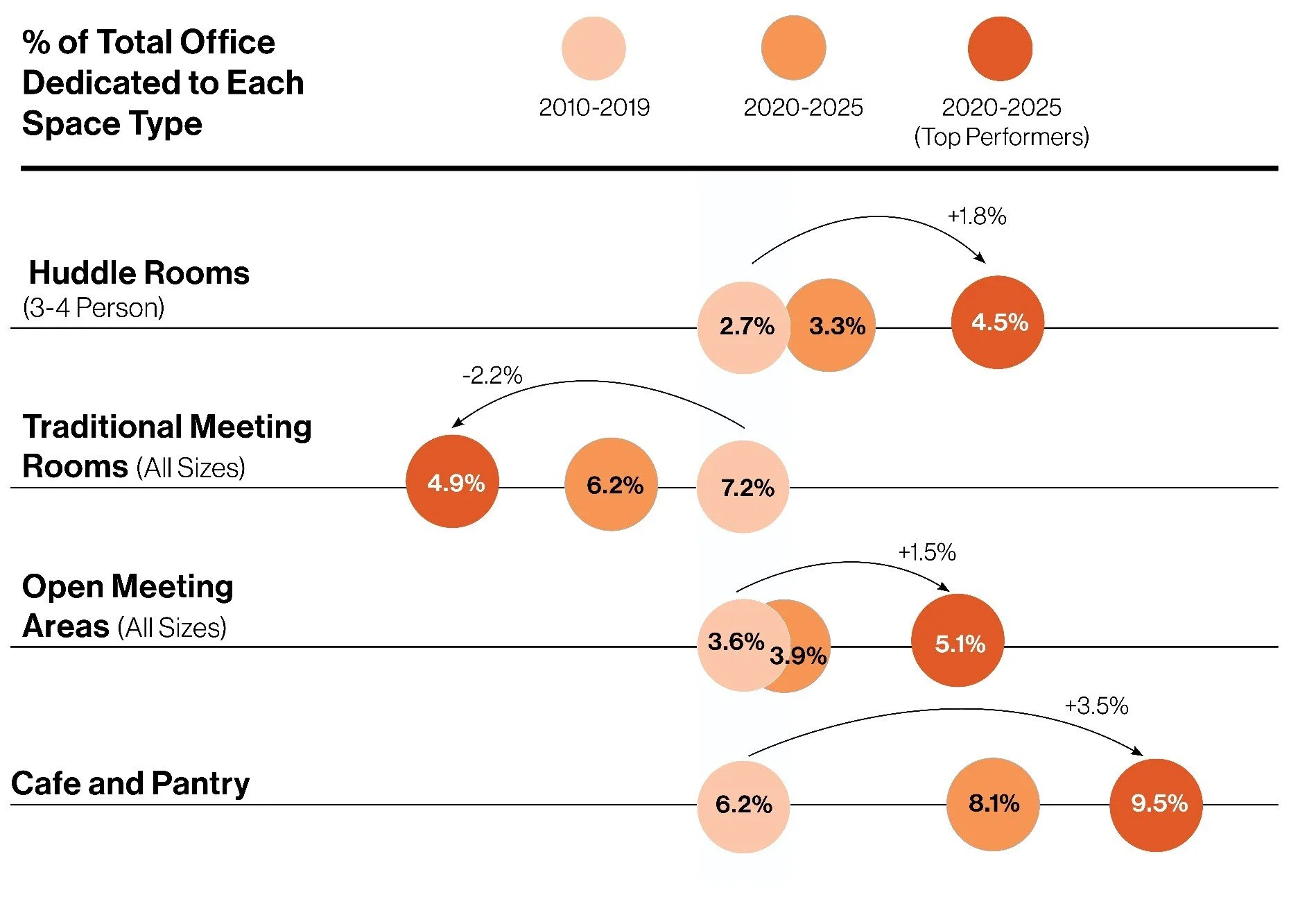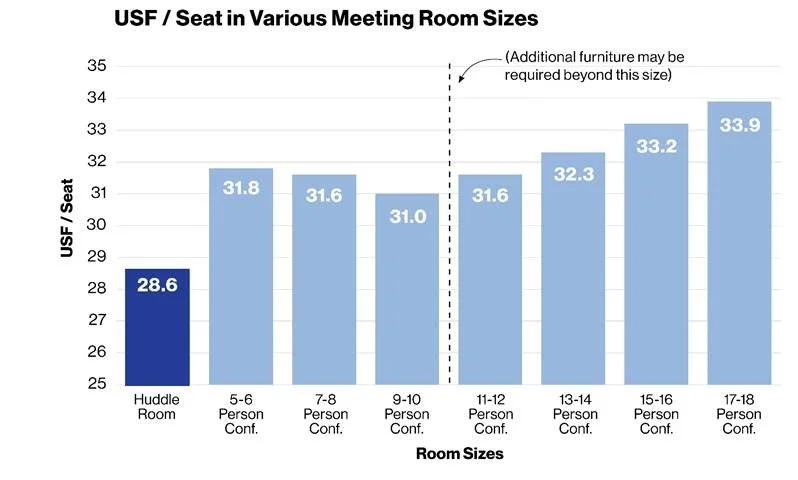June 2025
The Nature of Collaboration is Shifting
The demand for opportunities to connect is growing, pushing spaces that support quick, small ad-hoc collaboration rather than large, formal meetings. The need for the traditional meeting room is declining. People are less interested in rigid, scheduled meetings, seeking more natural and meaningful ways to connect with their teams – whether that be by ducking into a small huddle space or grabbing coffee at the local watering hole.
What Sets Huddles Apart?
Huddle rooms are typically the more intimate meeting room choice, which might actually be the key to their strength and success.
They provide an opportunity for employees to connect and collaborate in a more casual setting, improving team culture and communication.
Their tighter arrangement psychologically fuels quicker, more succinct meetings, improving day-to-day productivity.
They take up less square footage per seat than the a traditional conference room and provide greater flexibility in terms of how they are used (meetings, one-on-one chats, video calls, individual work).
HUDDLE ROOM STATS
74% of employees believe small rooms strengthen trust and team dynamics (Jabra)
52% of employees see informal, unplanned meetings as an important activity in their role (Leesman Index)
27.3% of meetings are spontaneous and unplanned (ReclaimAI from Dropbox)
Read More About It
Ark worked with HLW’s design team to rethink the Huddle Room for a recent pitch to Equinix. From design layouts to evolving technologies, we presented ideas that improve upon this room’s performance and intent. Check it out below!


